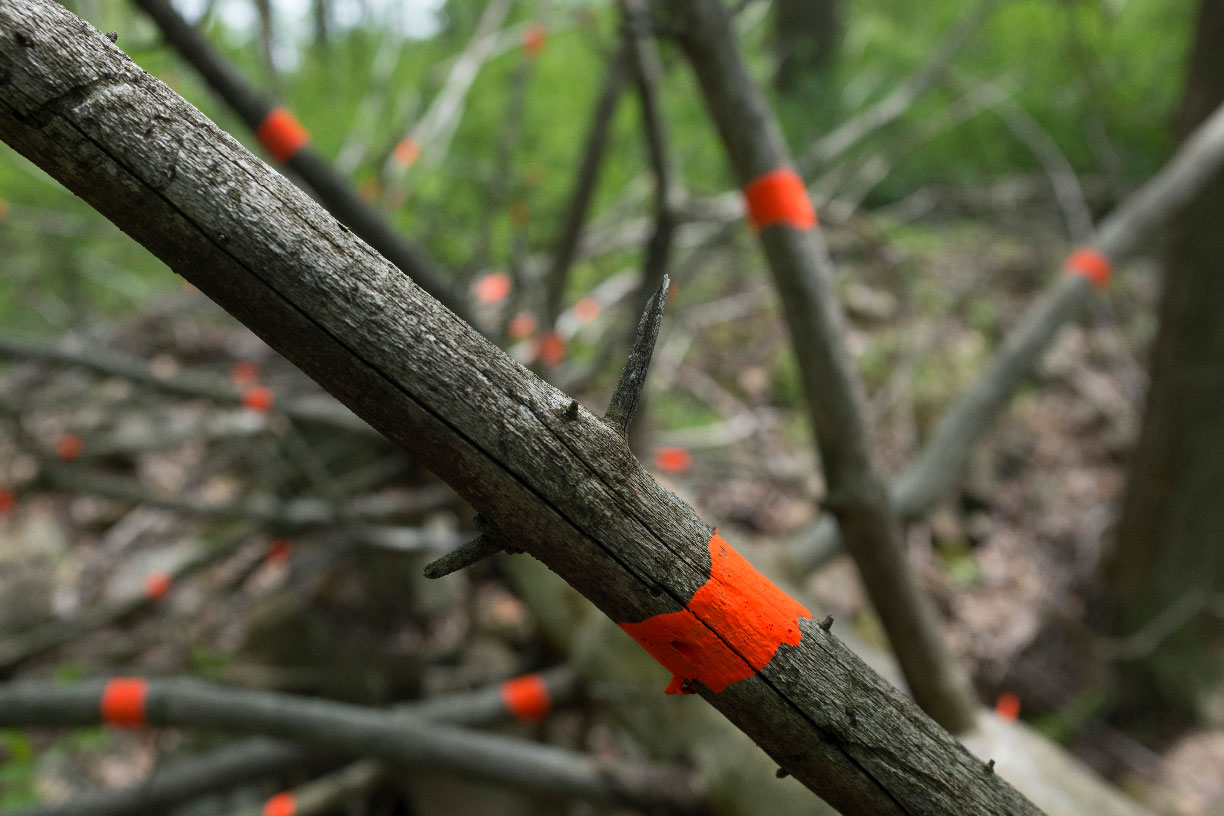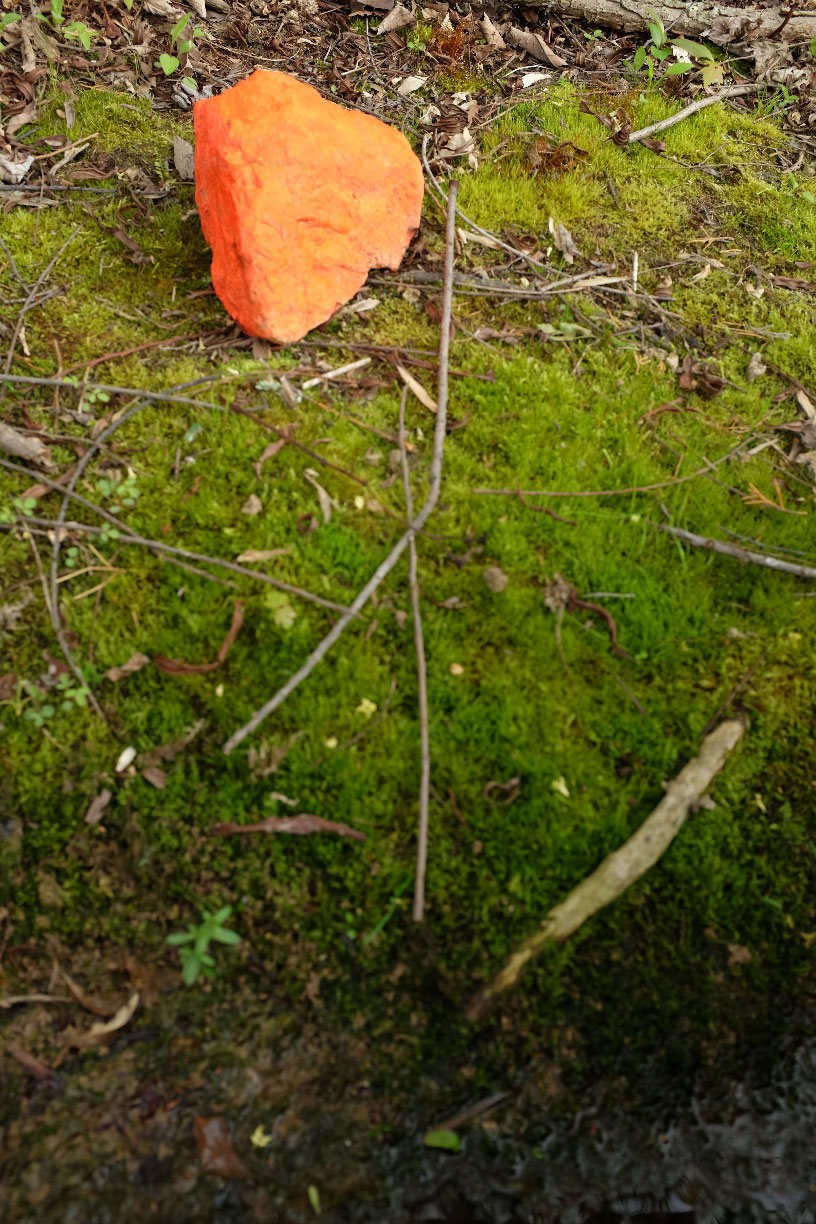Blaze of Whimsy
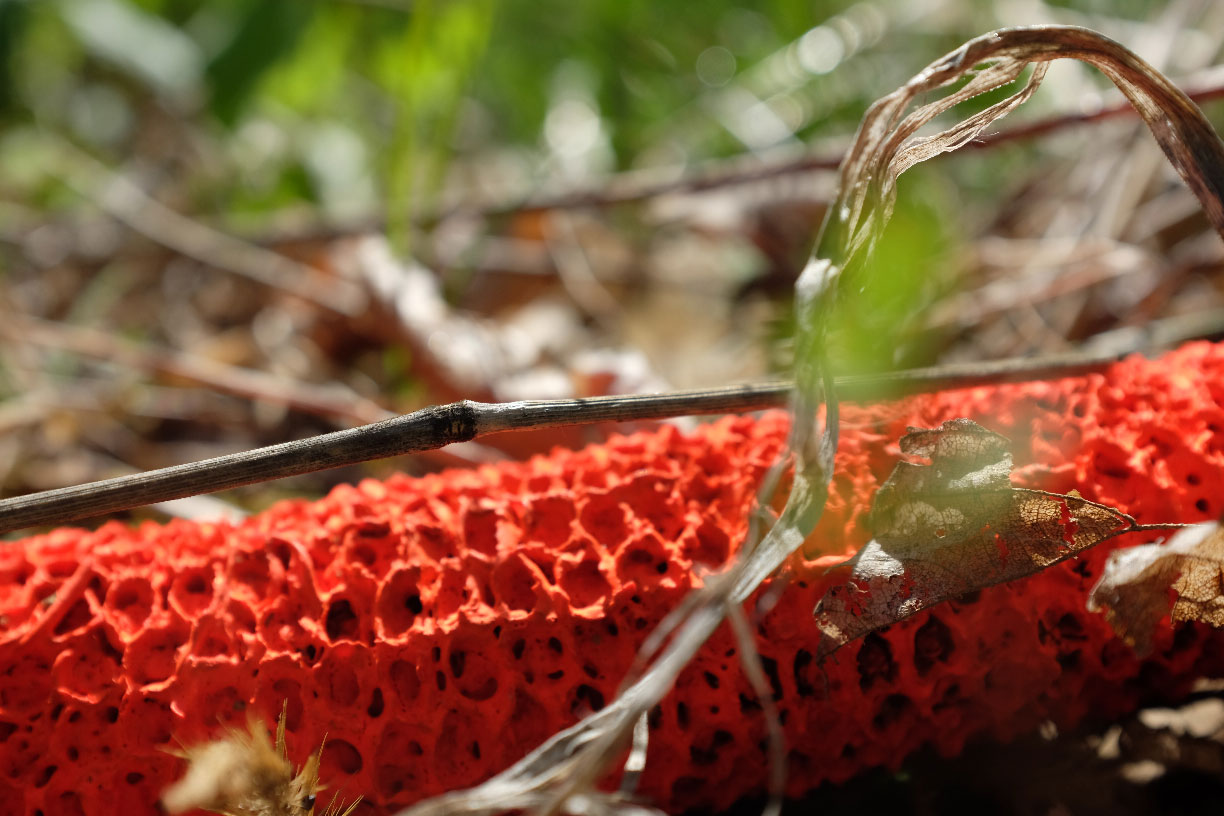
Spring 2016
Exquisite Corpus: The Maize
New Jerusalem, PA 19522
Blaze of Whimsy was created during a one week artist residency in New Jerusalem, PA. We were invited to create a work in response to a tract of land that was a mix of cultivated and natural landscapes, specifically a field that had been used for corn for over a decade. We chose to use Hunter's Orange as our material, as the color is in direct contrast with the blue sky and the green plants. We spent the week exploring the twenty-nine acres of land, marking things we found along the way. A map of all the locations can be viewed via Google.
hunters orange. the color of safety, and of demarcation. an alien color in the natural landscape; a contrast to the azure sky and verdant vegetation. a neighbor comes across a pair of painted works. the top of a cut stump, and its corollary, lying long along the ground, a flat circle also painted fluorescent orange. thinking it the works of vandals, the stump gets cut off and carted away and the trunk is rolled over. this made us think about the position of our work. if you make art in the woods and no one gets it, is it still art? is tagging nature with a can of fluorescent paint a disruption, a frisson that creates a deeper contemplation of nature, or is it an act of vandalism, an impulse of the ego to leave a mark, a territorial pissing, defacing the tranquility of nature with a profanity contrived in culture.
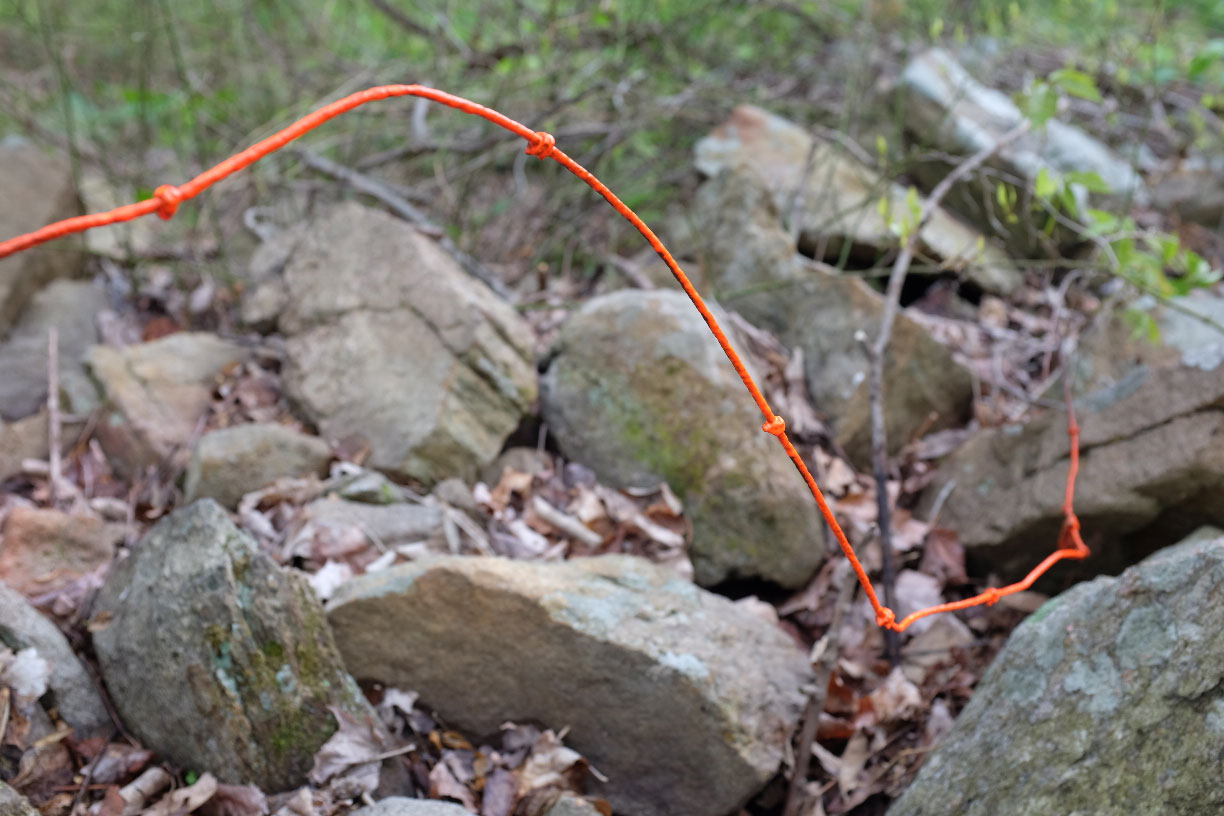
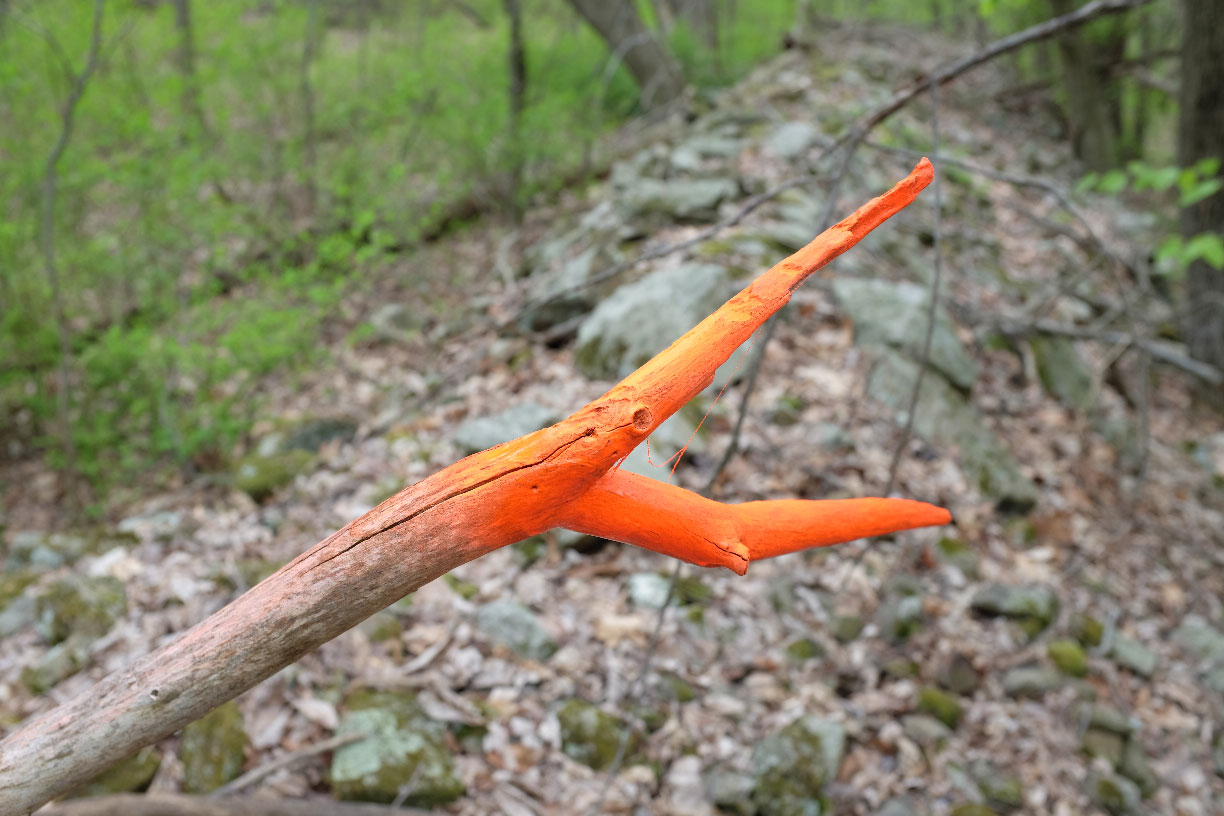
As the title explains, Blaze of Whimsy was originally an exploration of fancy. On our wanderings through the woods and fields, we used our hunter's orange to mark interesting spots and objects as we came upon them. No plan or structure other than the desire to walk and look informed our process.
We knew this work was temporary, and fully expected the 'natural' forces - animals and weather, to degrade these works in their own time, following their natural rhythms. What we didn't expect was human interruption - which is what happened. A helpful neighbor, who has taken on the hospitable task of cleaning trash and other 'unnatural' elements on the grounds, found our works and removed some of them, thinking they were acts of vandalism.
We were annoyed and surprised. Why didn't this man see the creative oddness of what we had done? What kind of high school kids would take the time to painstakingly avoid getting paint on the bark of the tree stumps they were painting? Why couldn't he see that this was Art?!
After our initial response, we were intrigued by the questions that this occurrence raised. Questions about 'Nature', questions about 'Culture', and questions about the context in which the two might interact.
A common way to think of 'Nature' is as a pure space, separate from human involvement, that has its own rules and occupants. By this definition, culture is frequently thought of as the opposite of 'Nature' - a conceptual space entirely defined by humans. Science, arts, civil works.
So where were we out there in Pennsylvania - in nature? Clearly the young forests and exhausted fields are the products of human intervention.
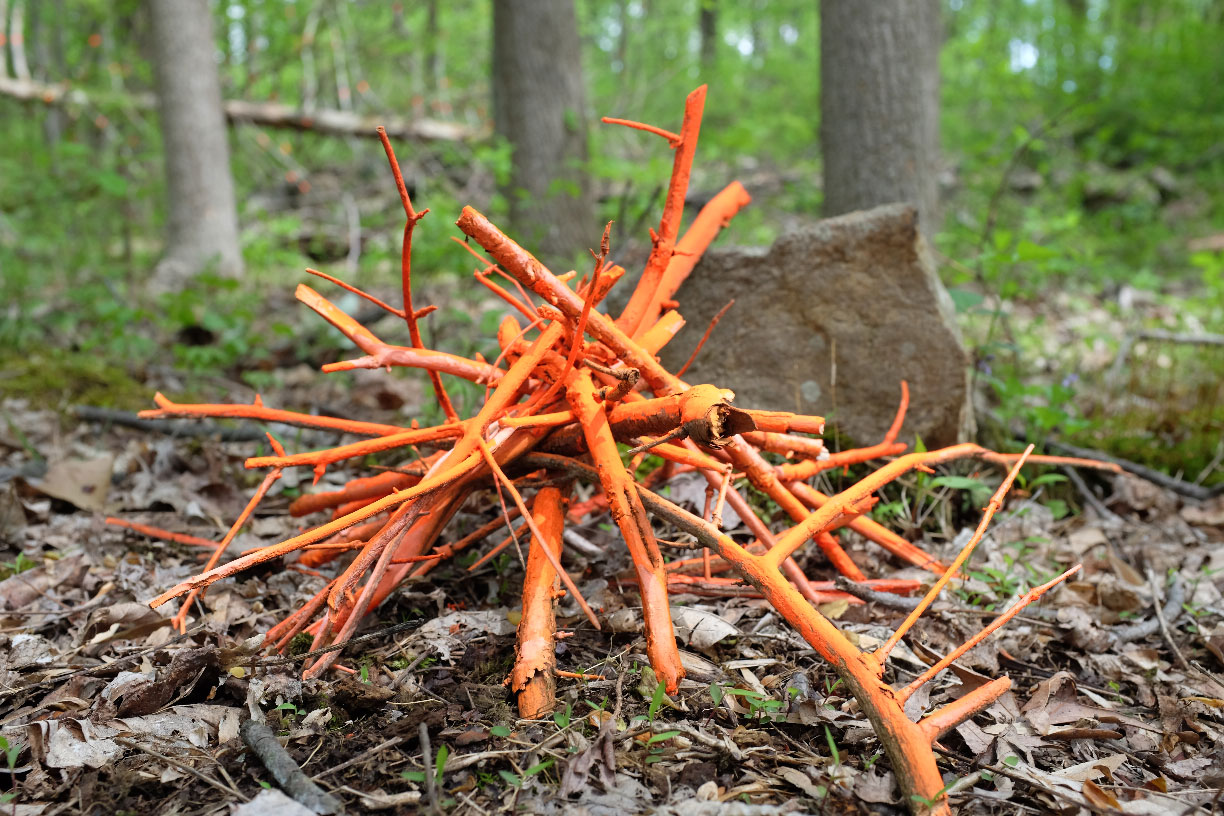
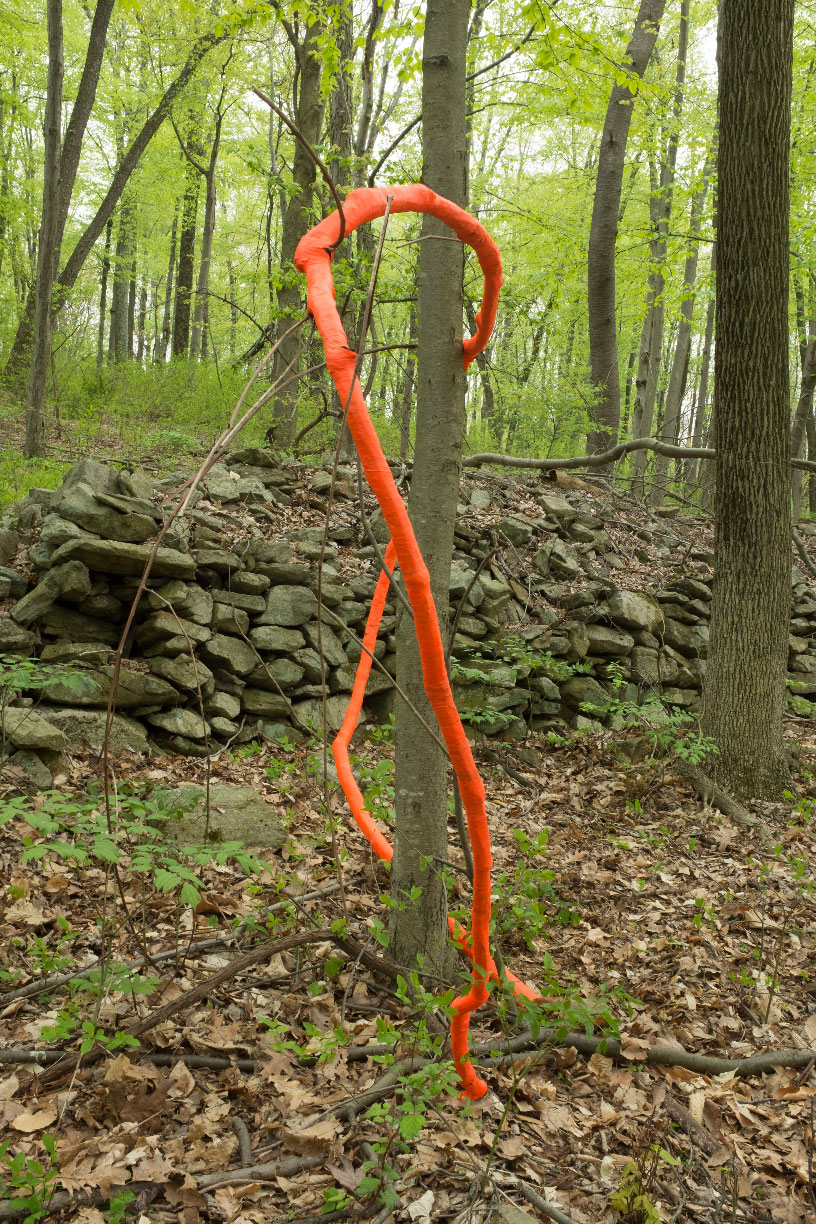
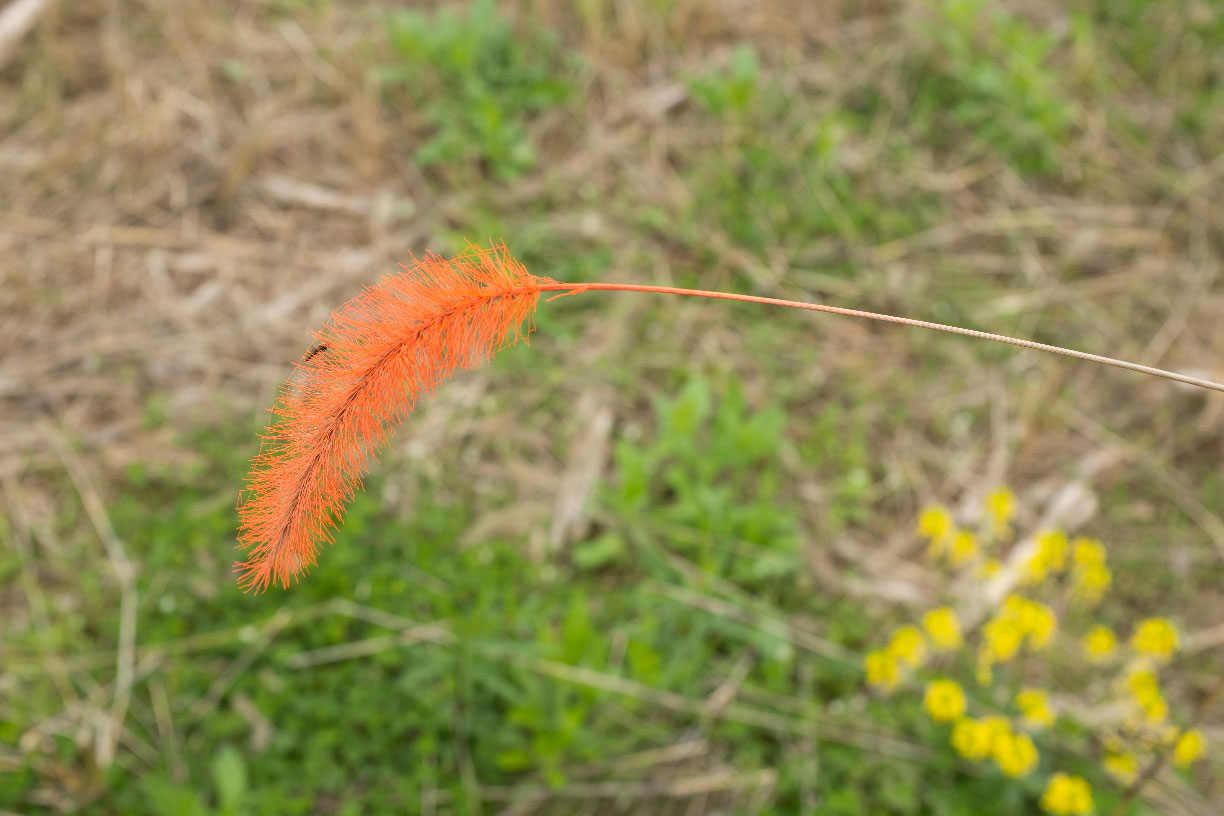
Maybe we were in culture instead. Centuries of human use had harnessed nature to its own ends. Architecture, agriculture, civic engineering were all around us.
Our works were made bright orange to scream out "CULTURE!" in a way we thought couldn't be missed. What we didn't think is that our bright orange 'culture' isn't in contrast to nature, in fact 'Nature', as a pure inhuman realm, does not exist (at least not in Pennsylvania). Instead, what we are working with here are two different, and possibly conflicting 'cultures': rural and urban. Our works are speaking the language of the city, possibly the university, but not of the farms and forests. The helpful neighbor dismantled our work because he was placing what we did into the only construct these spaces had for it - vandalism.
He ended up having a conversation with one of the artists and now our work has been replaced. What's gonna be a bit harder is convincing the squirrels who stole our orange hazelnuts to give them back... In the end, I think we can talk about nature, not as a space, pure or otherwise, but rather as a conversation taking place between humans and all the other voices that shape the world.